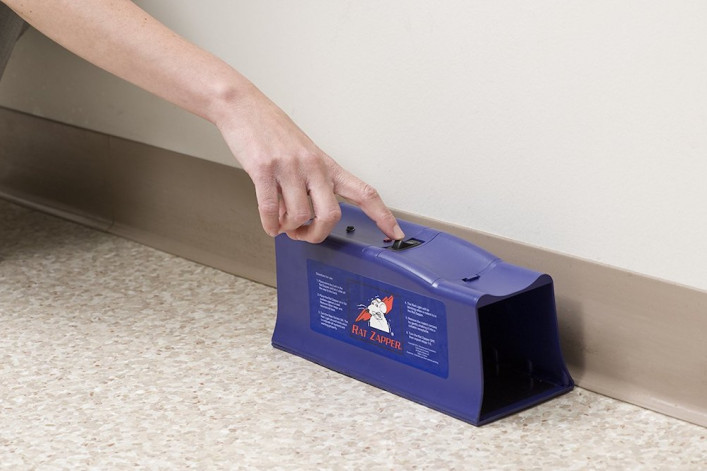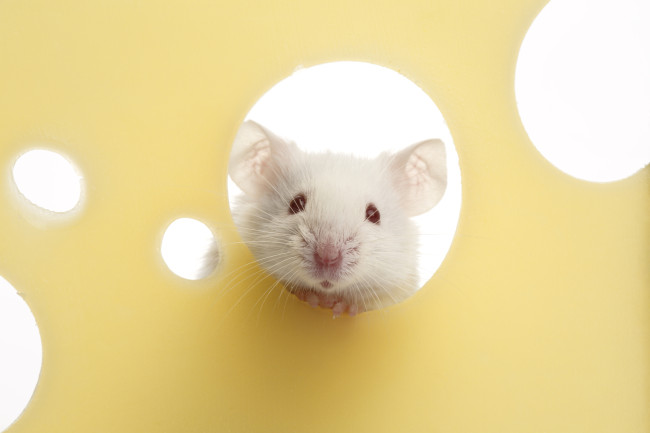Have a rat problem? This electrified trap could zap it away
Rats. As New Yorkers, we sort of resign ourselves to living among them. We share subway platforms and sidewalks with them, know to dodge them on trash day, and they're the species we turn to for our viral video fix.
However, living around rats and living with rats are two different things. Once the rodents breach the threshold of a New York City apartment, coexistence is no longer an option. The rats must be destroyed, by any means necessary.
As a New York city renter, I'd dealt with mice. I'd done the whole glue trap thing, and experimented with peanut butter-and-cheese bait mixes. It was never fun, but the infestations were always manageable. They came in when it got cold; we dealt with it; the end.
This story previously ran in August, 2017. We are presenting again in case you missed it.
I honestly don't remember the first time I saw a rat in my Cobble Hill apartment. I'm sure it was as we were watching TV in the living room, just off of the kitchen. The kitchen entryway had a hole in the floor, which was the short-haired bandit's point of entry.
Much like a mouse, the rat's habit was to quickly snake around the corner and continue along the wall, under our TV stand. Mice are small, and move like lightning, so fast that sometimes you're not even sure you actually saw something. Rats are obviously bigger, and therefore not as quick; they take those corners a bit slower. They're like the semi-trucks of the rodent family, and of course, they have those long tails which enable you, even if you miss seeing their bodies, to catch a glimpse of the intruder in your house.
I'm the type of person who tends to do deep dives when presented with a problem. I need to understand my enemy, so upon seeing the first rat, I went down the research rabbit hole, and I learned a lot of upsetting things in the process.
For example, droppings are of course evidence of rats, but "grease marks," left on floorboards by rat traffic, and evidence of gnawing on plaster, are also signs.
Also, the two types of rats most common in North America are Norway rats and roof rats. New York City rats are Norway rats, which burrow in gardens and prefer the lower levels of buildings, whereas roof rats make nests in trees and shrubs and enter houses from above. Thank God for small favors.
Setting my trap
At the hardware store, I perused the familiar rodent prevention options, but now with an eye toward killing a larger prey. For obvious reasons a glue trap was out of the question; a super-sized classic spring-loaded trap was equally unappealing because of the mess, so I opted for poison. With any luck, I thought, the rats would eat the pellets and elect to expire outside our apartment. I supplemented the poison with three mini "Pest Chaser" units, based on positive results a few decades back, when we had a mouse problem in our upstate home and a similar gadget was ultimately the only thing that worked. Pest Chasers are supposed to emit a high-pitched sound, inaudible to humans, that sends pests scurrying, and the miniature ones have a nightlight feature, all the better to see your rats.
When I consulted one of the hardware store employees, he pointed me to a high-tech, expensive gadget dubbed "The Rat Zapper," emblazoned with a cartoon illustration of a distressed-looking rat and a lightning bolt. He seemed pretty confident, but it cost around $50, and I thought he was trying to up-sell me.
Opting to zap
Within a day or two, though, I made the discovery that a rat had eaten an entire package of spaghetti off of our kitchen shelf. I immediately went online and bought the Rat Zapper Classic for about $45. A plastic shell outfitted with a metal floor that is electrified by four AA batteries, the Rat Zapper does just what it sounds like—it hits rats with 8,000 volts for two minutes when they step on the metal plate and complete the electrical circuit. The manufacturers claim this is humane, and I do hope that is true, but I also didn't care at that point.
As with mechanical traps, you place the Rat Zapper along a wall where you have seen the rats, or evidence of them. Using a Q-tip or toothpick, to avoid getting your scent on the trap, load the trap with your bait of choice. I found a mix of peanut butter and dry pet food was the magic combination. Then you wait, as it takes time for the rats to accept the trap as part of their environment. I had almost given up when one morning, I saw the Rat Zapper's red indicator light blinking, signaling success... Yay?

Victory isn't always pretty
Yes, I had to dump a dead rat in a bag, and it wasn't pleasant, but the rat was in one piece and it was dead, which in my book was better than the alternative. I reloaded the trap, caught another one a couple days later, and that was the end of our rat problem. Oh, and we put a board over the hole in our floor, too.
I cannot recommend this product enough. If you're intrigued, you should also know that Rat Zapper makes a rodent-shaped "Rat Tale" remote monitor for about $13. The red eyes are supposed to light up when you've made a kill, sparing you the crawling around and checking of traps placed in hard-to-reach corners of the apartment.
You Might Also Like






























